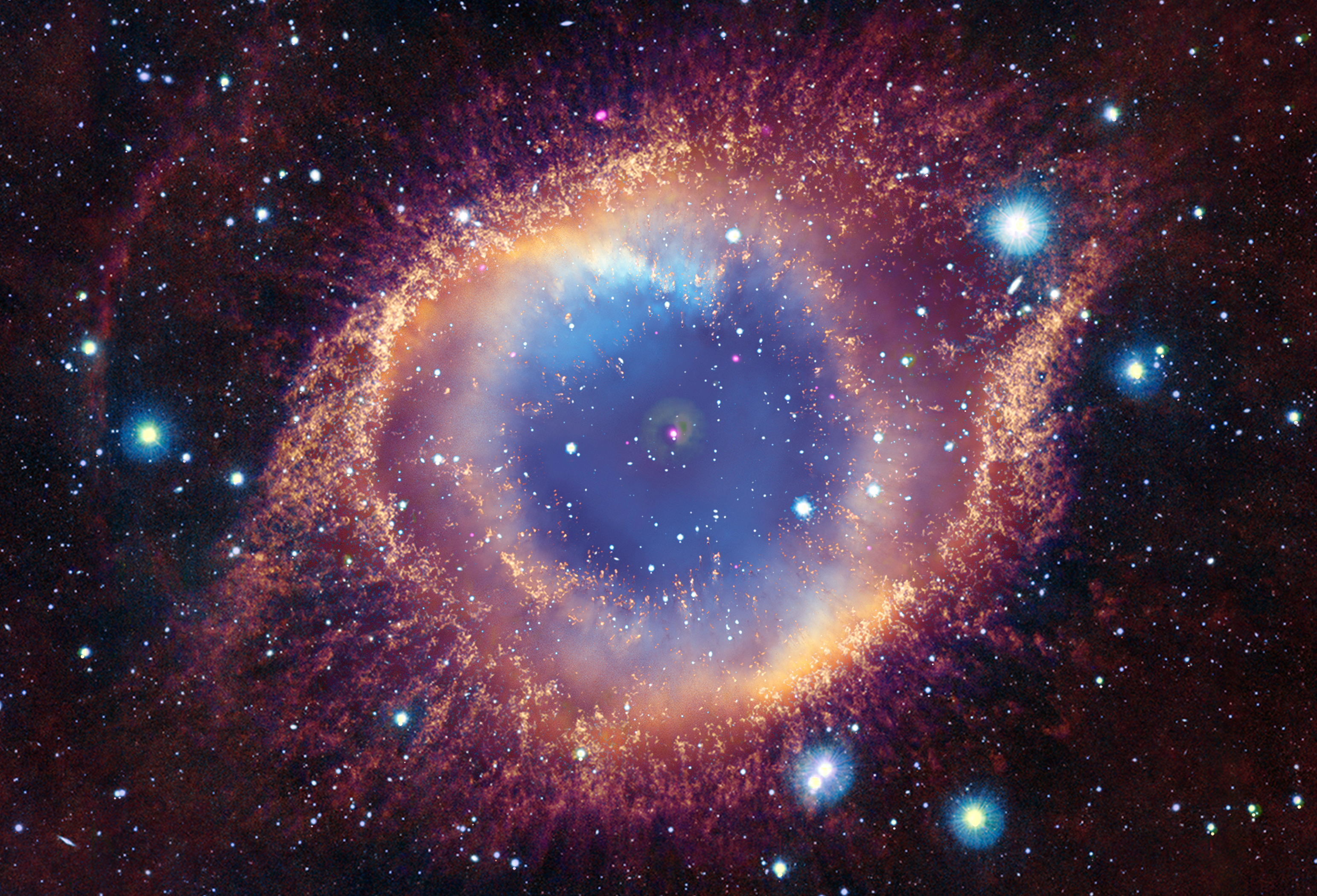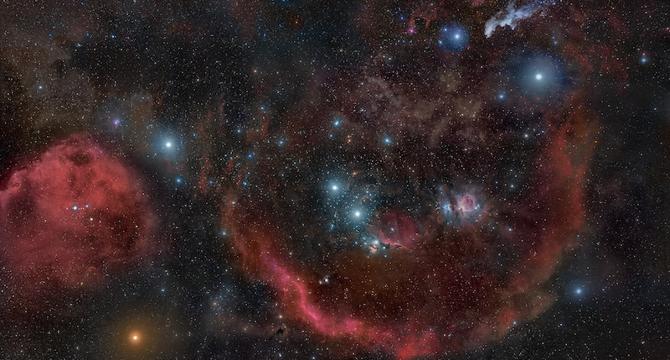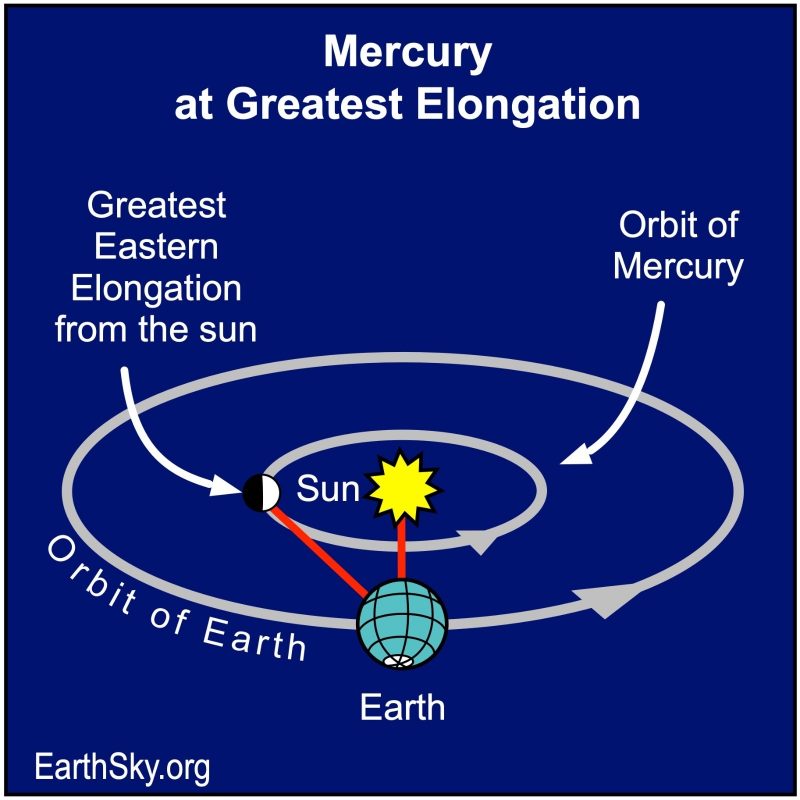Space News
Medium
285

Image Credit: Medium
Shift of the Oscillation Center in a Gravitational Field: A New Perspective on Spacetime Curvature
- Classical Pendulum: Oscillates symmetrically around the center (e.g., 5/5 cm).
- Pendulum in Curved Space: The center of oscillation shifts (e.g., to 6/4 cm).
- Local Gravitational Anomalies: This effect could explain subtle deviations in the motion of objects within different gravitational fields.
- A New Perspective on Gravitational Waves: The shift in the center of oscillation could provide an alternative method for detecting and understanding gravitational waves.
Read Full Article
17 Likes
Nasa
95

Image Credit: Nasa
Blue Ghost Lands on Moon
- Firefly Aerospace's Blue Ghost Mission 1 successfully landed on the Moon.
- The lunar lander safely delivered a suite of 10 NASA science and technology instruments.
- The instruments will operate on the lunar surface for approximately one lunar day.
- This is the first Moon landing for Firefly Aerospace.
Read Full Article
5 Likes
Livescience
231

Image Credit: Livescience
9 best things to see in the night sky with binoculars
- Looking up at the night sky with binoculars reveals a spectacular view of star clusters, galaxies, and nebulas, enhancing the experience.
- Key events like the total lunar eclipse on March 13-14, 2025, offer close-up viewing opportunities for the moon's surface turning reddish-pink.
- Notable sights include the Pleiades cluster, Orion's Sword with the Orion Nebula, and the distinctive 'S' shape in Orion's Belt.
- The Hyades Cluster in Taurus, visible between January and April, offers a V-shape of stars revealing hundreds when viewed closely with binoculars.
- 2025 presents opportunities to observe the sun, including sunspots during its peak activity and a partial solar eclipse on March 29.
- The Beehive Cluster in Cancer, Andromeda Galaxy, and intriguing double star Mizar and Alcor, known as the 'horse and rider,' are recommended targets.
- For best visibility, explore these celestial wonders with high-quality binoculars like 8x42, 7x50, or 10x50 models.
Read Full Article
13 Likes
Nasa
290

Image Credit: Nasa
X-ray Signal Points to Destroyed Planet, Chandra Finds
- A white dwarf at the center of a planetary nebula may have destroyed a planet, explaining a mysterious X-ray signal detected from the Helix Nebula over 40 years.
- Composite image with X-rays from Chandra, optical data from Hubble, infrared data from ESO, and ultraviolet data from GALEX indicates the white dwarf at the Helix Nebula destroyed a closely orbiting planet.
- Debris from the destroyed planet will form a disk around the white dwarf, creating the X-ray signal astronomers have detected for decades.
- X-ray missions dating back to 1980 have observed unusual readings from the white dwarf at the center of the Helix Nebula, named WD 2226-210.
- WD 2226-210 exhibits similarities in X-ray behavior to other white dwarfs, possibly constituting a new class of variable objects.
- Observations suggest a planet in an extremely close orbit around WD 2226-210, with a regular change in X-ray signal every 2.9 hours.
- The X-ray signal could be debris from a destroyed planet being pulled onto the white dwarf, a first observed case in a planetary nebula.
- A paper detailing these findings is published in The Monthly Notices of the Royal Astronomical Society.
- This discovery may shed light on the fate of planetary systems as stars evolve, potentially providing insights into Earth's distant future.
- The study authors include researchers from institutions like the National Autonomous University of Mexico and the Institute of Astrophysics of Andalusia.
Read Full Article
17 Likes
Discover more
Nasa
176

Image Credit: Nasa
How NASA Employee Went from Rock Climbing to Rocket Propulsion
- Jason Hopper, a NASA employee, started his journey by assessing risks and reading a rocket propulsion textbook while rock climbing at Mississippi State University.
- He was introduced to NASA's Stennis Space Center by a fellow student, leading him to a career in rocket propulsion testing.
- Hopper transitioned from a contractor to a civil servant at NASA in 2011, serving as a test conductor and later becoming a risk manager.
- His contributions include working on the J-2X engine test program, the SLS core stage hot fire, and projects at the E Test Complex.
- NASA Stennis, where Hopper works, is known for its excellence in rocket propulsion testing, supporting both government and commercial projects.
- Hopper emphasizes the importance of addressing high-risk items to maintain national test capabilities vital for space exploration.
- He oversees propulsion test capabilities at multiple NASA facilities, ensuring safe and efficient testing for space exploration and technology development.
- Hopper looks forward to redefining NASA Stennis' role, shifting towards a supportive role for commercial companies in space exploration.
- His work is focused on maintaining test facilities that enable safe and cost-effective rocket propulsion tests, supporting advancements in space technology.
- Hopper's journey from rock climbing to contributing to NASA's rocket propulsion efforts exemplifies the impact of taking risks and exploring new opportunities.
Read Full Article
10 Likes
TechCrunch
394

Image Credit: TechCrunch
Polish space agency says it’s investigating a cyberattack
- Poland's space agency (POLSA) is investigating a cyberattack on its IT infrastructure.
- POLSA disconnected its network from the internet after detecting the attack and its website remains offline.
- The nature of the cyberattack is still unknown and state cybersecurity services are working to identify the perpetrators.
- Poland has previously reported being the most attacked country in the European Union, with Russia being attributed as the source of many incidents.
Read Full Article
23 Likes
Metro
149

Image Credit: Metro
When and where you could see the Northern Lights in the UK tonight
- The Northern Lights might be visible as far south as Norfolk if they appear in the skies above the UK tonight.
- If the aurora borealis does appear, it will peak around midnight tonight. You could see it as early as 9pm or as late as 2am.
- Places more suitable for viewing the Northern Lights are Scotland, large parts of the north of England, and potentially as far south as the north of Norfolk.
- Dark, rural areas on the north coast, such as the North Sea beach near Inverness, are ideal for spotting the Northern Lights.
Read Full Article
9 Likes
Earthsky
54

Image Credit: Earthsky
Solar system passed through Orion, says intriguing new study
- Our solar system passed through a star-forming region in the direction of the Orion constellation around 14 million years ago.
- During this passage, the solar system traversed the Radcliffe Wave, a gaseous structure in the Orion Arm of the Milky Way known for its stellar nurseries.
- The journey coincided with the Middle Miocene Climate Transition, potentially impacting Earth's climate through interstellar dust influx.
- The findings were published in Astronomy & Astrophysics on February 11, 2025, revealing the solar system's encounter with higher gas density.
- Scientists used Gaia mission data to trace the solar system's path through the Orion region, passing star clusters like NGC 1977 and NGC 1981.
- The compression of the heliosphere during the passage could have increased interstellar dust influx on Earth.
- Traces of radioactive elements originating from supernovae may exist in Earth's geological record due to this event.
- The passage through the Orion region roughly 14 million years ago coincided with a climate shift, though the exact impact is still under investigation.
- While the contribution of interstellar dust to Earth's climate transition is being explored, it's noted that the current climate change differs significantly in timescales and causes.
- This event highlights the potential influence of interstellar encounters on planetary climate over extended periods.
Read Full Article
3 Likes
Livescience
385

Image Credit: Livescience
Where will the 'Blood Moon' total lunar eclipse be visible in March 2025?
- The total lunar eclipse occurring on March 13-14, 2025, will be visible primarily from North America, South America, and parts of Europe and East Asia.
- The eclipse will last over six hours, with different phases including penumbral, partial, and totality.
- The spectacle of the 'Blood Moon' turning reddish is expected to last for 65 minutes during totality.
- North America, South America, and Oceania will have the best views, with Europe and Africa seeing partial phases at moonset.
- In the U.S., all time zones will experience different eclipse phases, with even Hawaii and Alaska catching a glimpse.
- Europe, especially Western locations like the U.K., Spain, and France, will witness parts of the eclipse as the moon sets early on March 14.
- Locations in Iceland and Greenland will have a better view of the eclipse in comparison to most parts of Europe.
- Clear skies are crucial for visibility during the eclipse, with western U.S., Canada, and parts of South America having better chances of clear skies.
- The eclipse will be safe to observe throughout its duration, offering a leisurely and captivating celestial event.
- Details on how to watch the lunar eclipse online will be provided closer to the event date by Space.com.
Read Full Article
23 Likes
Earthsky
354

Image Credit: Earthsky
Vacation-style beaches on Mars? New evidence for lost ocean
- Evidence continues to suggest the presence of a now dried-out ocean basin in the vast lowlands of Mars' northern hemisphere.
- Data from China's Zhurong rover revealed subsurface layers similar to Earth's coastlines, supporting the existence of an ancient ocean and beaches on Mars.
- International researchers, backed by the latest findings from Zhurong's mission, indicate the likelihood of a past Martian ocean and sunny, sandy beaches.
- A new study, including researchers from Pennsylvania State University, published in the Proceedings of the National Academy of Sciences, supports the concept of a huge ocean in Mars' northern hemisphere.
- The evidence suggests that Mars once had an ocean with sandy beaches and gentle waves, resembling terrestrial coastlines.
- The Zhurong rover discovered buried layered structures resembling foreshore deposits, which require waves and tides to form, hinting at dynamic air-water interactions indicative of habitable environments.
- Researchers found similarities in the Martian deposits to terrestrial beaches, ruling out other explanations such as rivers, wind, or volcanic activity for the formations.
- The findings also shed light on Mars' evolutionary landscape, showing changes in ancient shorelines over time, providing insight into potential past habitability and the search for evidence of prior life.
- Scientists contemplate the Martian dichotomy, with the lowlands possibly being an ancient ocean basin, offering clues to Mars' geological history and the presence of vacation-style beaches in its distant past.
- The study affirms the existence of ancient coastal deposits on Mars and supports the notion of a lost ocean world on the red planet, featuring beaches ideal for inter-planetary vacations.
Read Full Article
21 Likes
Digitaltrends
226

Image Credit: Digitaltrends
Problems with Starship force SpaceX to call off test flight at the last minute
- SpaceX's test flight of the Starship was called off in the final minute before takeoff.
- The launch was scrubbed due to issues with both the first stage and upper stage of the rocket.
- SpaceX CEO Elon Musk mentioned there were concerns about the flight and mentioned low ground spin start pressure.
- The new time and date for the Starship's eighth test flight has not yet been announced.
Read Full Article
13 Likes
Knowridge
13

Image Credit: Knowridge
Scientists set new limits on dark matter’s mysterious lifetime
- Scientists have used advanced technology to set new limits on the lifetime of dark matter.
- Dark matter is an invisible substance that makes up most of the mass in the universe.
- Using a special spectrograph, the researchers observed two distant galaxies to look for decay signals.
- The study suggests that if axion-like particles exist, they could last at least 10 to the power of 25 to 26 seconds.
Read Full Article
Like
Metro
317

Image Credit: Metro
Elon Musk calls off Starship test flight 8 weeks after last launch exploded
- Elon Musk called off the Starship test flight in Texas after the last launch exploded.
- The previous launch in January resulted in the rocket exploding minutes into the test flight.
- SpaceX made several hardware and operational changes to make the Starship more reliable.
- Elon Musk hopes to send uncrewed Starship rockets to Mars in 2026.
Read Full Article
19 Likes
Earthsky
9

Image Credit: Earthsky
Mercury farthest from sunset on March 7-8 and near Venus
- Mercury reaches its greatest elongation, farthest from the sun, on March 7-8, 2025.
- Visible in the western sky after sunset, Mercury will be about 18 degrees from the sun at its greatest elongation.
- Mercury, shining at -0.4 magnitude, will appear brighter than most stars during this time.
- It will rapidly fade after greatest elongation as it moves behind Earth in its orbit.
- Mercury will be approximately 47% illuminated and 7.3 arcseconds across when viewed through a telescope.
- During this elongation, Mercury will be in front of the constellation Pisces.
- Mercury's visibility is tied to the sun, never venturing far above the horizon.
- Venus and Mercury will be close in the sky in March, both planets disappearing in bright twilight by mid-March.
- Brilliant Venus will emerge in the morning sky in April, with both planets having upcoming significant events in 2025.
- Mercury's elongations vary throughout the year, with the best evening apparition for the Northern Hemisphere in March.
Read Full Article
Like
For uninterrupted reading, download the app